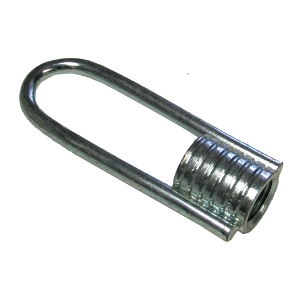Tokyo Electric Power's first reference to the option -- employed in the aftermath of the 1986 Chernobyl disaster -- suggested efforts to prevent materials at the facility's six reactors from overheating might prove unsuccessful, according to Reuters (Saoshiro/Negishi, Reuters I, March 18).
Untreated material could melt down or even re-enter the fission process, potentially resulting in much larger radioactive material releases than have been seen so far from the plant crippled by Friday's 9.0-magnitude earthquake and devastating tsunami, the New York Times reported. Officials have said the events probably caused no fewer than 10,000 deaths (Tabuchi/Bradsher, New York Times I, March 18).
"It is not impossible to encase the reactors in concrete. But our priority right now is to try and cool them down first," Reuters quoted a representative of the operator as saying (Saoshiro/Negishi, Reuters I).
Authorities were spraying seawater into the No. 1, No. 2 and No. 3 reactors using fire hoses, and the Japanese Self-Defense Forces dropped four water loads into the No. 3 reactor by helicopter, the International Atomic Energy Agency said on Thursday, referencing reports by the Japanese government. The U.N. nuclear watchdog noted that damage had occurred to the cores of the three three reactors, but that the situation "appears to be relatively stable" (International Atomic Energy Agency release, March 18).
"The water is likely to have reached the target,¡± Japanese Air Self Defense Force Chief of Staff Shigeru Iwasaki said (Tabuchi/Bradsher, New York Times I).
Water levels were falling in the pressure vessels for reactors No. 5 and No. 6, according to an IAEA statement.
Workers were installing an electrical cable to the No. 2 reactor (International Atomic Energy Agency release). The goal is to begin supplying electricity by Saturday to water pumps at reactors No. 1 and No. 2, said Hidehiko Nishiyama, a spokesman for Japan's atomic agency. Power at the No. 4 reactor might also be restored then as well, he said, adding Japan hopes by Sunday to begin powering pumps at the No. 3 reactor.
Even with power, the pumping systems might fail to function properly due to damage, according to Reuters.
The option of burying parts of the facility "is in the back of our minds, but we are focused on cooling the reactors down," Nishiyama said (Saoshiro/Negishi, Reuters I).
The No. 4 reactor is still "a major safety concern," the U.N. nuclear watchdog said, adding that Japan has provided no updates since Monday on the temperature of water in the reactor's cooling pond (International Atomic Energy Agency release).
The pool could be leaking water through a possible fissure, the U.S. Nuclear Regulatory Commission determined. The NRC assessment drew from data provided by U.S. contractors at the site when the earthquake hit, as well as an analysis of developments in the last week, the Los Angeles Times reported (Los Angeles Times, March 18).
It was unclear whether a fire previously reported at the No. 4 reactor had been extinguished, the New York Times quoted U.S. officials as saying (Tabuchi/Bradsher, New York Times I).
Japan has requested U.S. support in the nuclear crisis and the sides were discussing possible avenues for assistance, the Associated Press quoted Japanese Chief Cabinet Secretary Yukio Edano as saying on Friday (Associated Press/Yahoo!News, March 18). Nine U.S. personnel set to deploy to Japan specialize in defending against nuclear, biological and chemical weapons, Kyodo News quoted a Defense Department official as saying (Kyodo News, March 17).
Conditions at the Fukushima Daiichi facility were "reasonably stable," Reuters quoted IAEA official Graham Andrew as saying on Thursday.
"It hasn't got worse, which is positive," Andrew said. "The situation remains very serious but there has been no significant worsening since yesterday."
"As of today I'm not aware that anyone has died from this accident. That is not to seem complacent, we're far from that," he said.
The U.N. nuclear watchdog has been periodically updated since Wednesday on radiation dose rates in 47 Japanese cities, Andrew said. Radiation intensity in Tokyo has remained largely consistent and is still "well below levels that are dangerous to human health," he said (Dahl/Westall, Reuters II, March 17).
Japan has upgraded the Fukushima facility's nuclear incident level from 4 to 5 on a scale that tops out at 7, the agency announced on Friday (Dahl/Westall, Reuters III, March 18).
IAEA Director General Yukiya Amano on Friday pressed Tokyo to provide his monitoring organization with additional details on the "extremely serious" emergency, the Xinhua News Agency reported.
"There is the opinion in the international community that more detailed information is needed," Amano reportedly told Prime Minister Naoto Kan in Tokyo. Kan said he would do his best to cooperate
sourcing from http://www.globalsecuritynewswire.org/gsn/nw_20110318_2283.php







